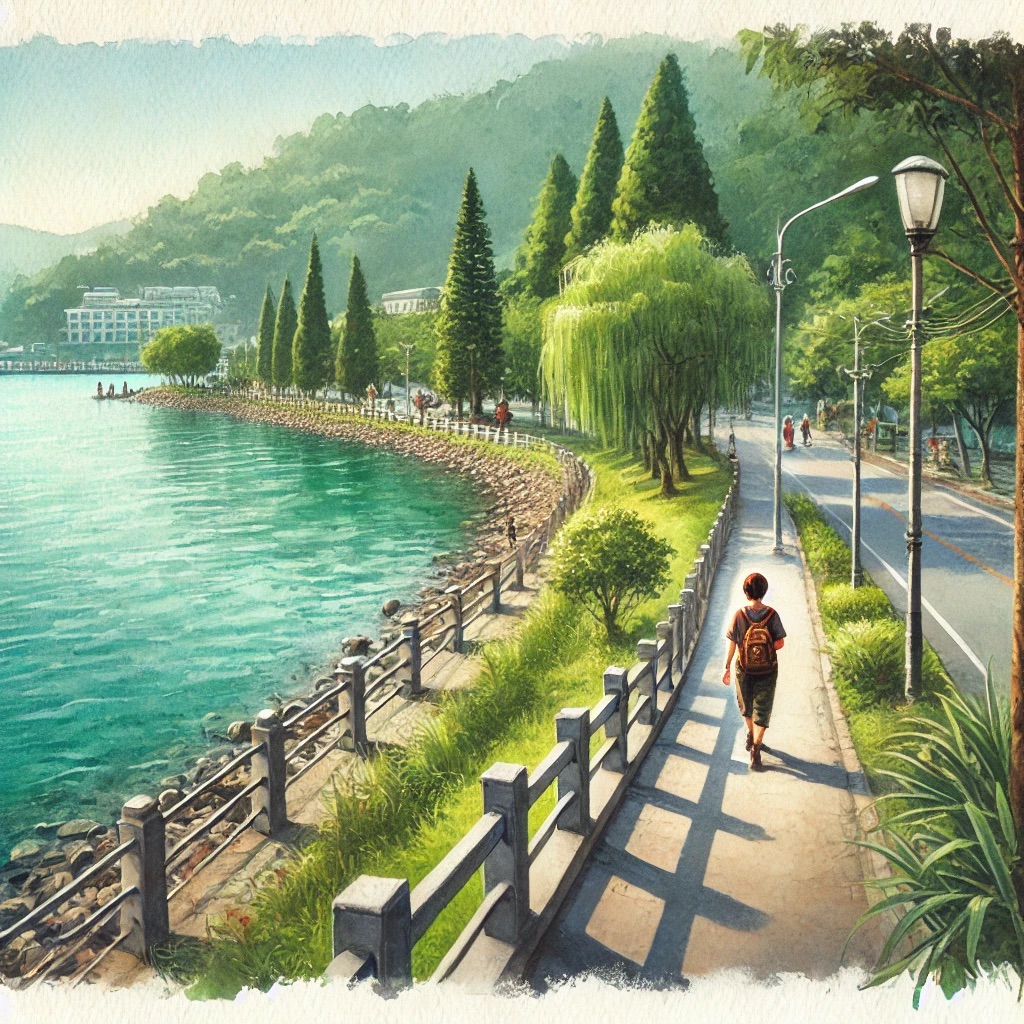ChatGPT:Bregenz is a picturesque town located on the eastern shore of Lake Constance (Bodensee) in the westernmost state of Austria, Vorarlberg. It is known for its stunning natural scenery, with the lake on one side and the Pfänder mountain on the other. The town has a rich history, dating back to Roman times, and it blends historic charm with modern attractions.
One of the most famous features of Bregenz is its annual Bregenz Festival (Bregenzer Festspiele), which takes place each summer. This event is renowned for its spectacular opera performances held on a floating stage on Lake Constance, with the lake and surrounding mountains providing a breathtaking backdrop.
Bregenz’s old town, or “Oberstadt,” is filled with narrow cobblestone streets, historic buildings, and landmarks such as the Martinsturm, a medieval tower with a distinctive onion dome. The town also offers modern cultural attractions like the Kunsthaus Bregenz, a contemporary art museum with innovative exhibitions.
For outdoor enthusiasts, the Pfänder mountain is a major draw. Visitors can take a cable car to the summit for panoramic views of the lake and the Alps or explore the many hiking and biking trails in the area.
Overall, Bregenz is a vibrant town that combines natural beauty, cultural richness, and a deep sense of history, making it a popular destination for tourists and a charming place to visit or live.
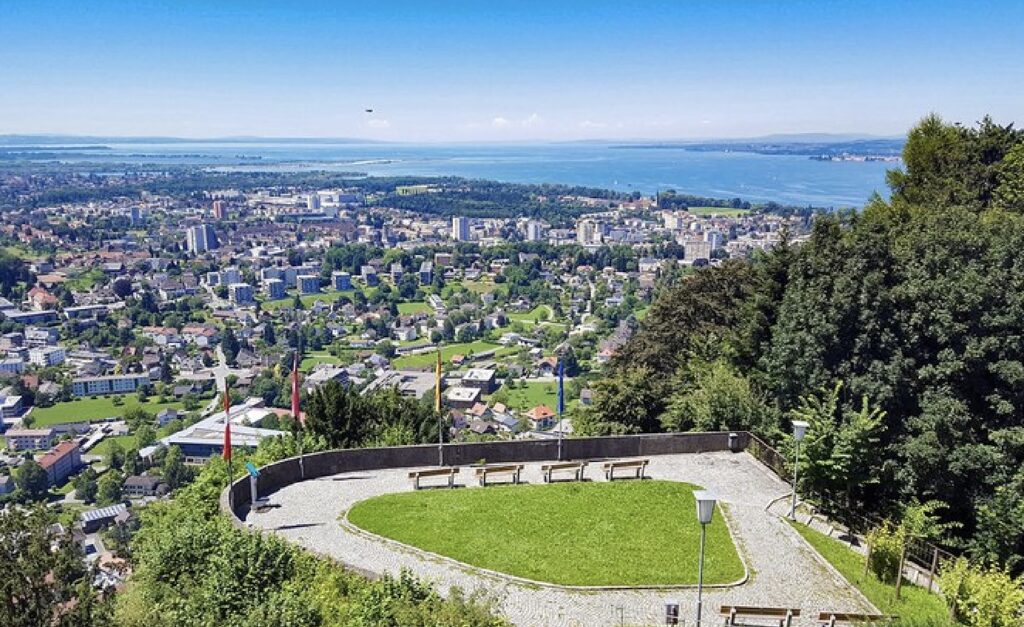
Bregenz, has a rich history that spans over two millennia. Its origins date back to the Bronze Age, around 1500 BCE, when it was first settled by the Celts. The town’s name is believed to derive from the Celtic word “Brigantion,” meaning “high place” or “fortress,” reflecting its strategic location.
Roman Era
In the 1st century BCE, Bregenz became part of the Roman Empire and was known as Brigantium. Under Roman rule, it developed into a significant military and administrative center. The Romans built fortifications, roads, and other infrastructure, turning Brigantium into a bustling settlement. The remnants of Roman buildings, including the foundations of a bathhouse, can still be found in Bregenz today.
Early Middle Ages
After the fall of the Roman Empire, Bregenz went through a period of decline. It was invaded by various Germanic tribes, including the Alemanni and later the Franks. By the 8th century, Bregenz was part of the Frankish Empire under Charlemagne. During this time, the area began to Christianize, and a monastery was established, which played a key role in the town’s religious and cultural development.
Middle Ages
In the 10th century, Bregenz became the seat of the Counts of Bregenz, a noble family that ruled the region. The town grew in importance as a trading center, thanks to its location on Lake Constance and its connections to other parts of Europe. The medieval town of Bregenz was centered in what is now the “Oberstadt” (Upper Town), characterized by narrow streets and fortified structures, including the Martinsturm, a watchtower built in the 13th century.
Habsburg Rule
In the 14th century, the Counts of Bregenz sold the town to the Habsburgs, who ruled much of Austria and Central Europe. Under Habsburg rule, Bregenz continued to develop as a regional center, with trade, agriculture, and fishing as its main economic activities. The town also played a strategic military role, given its location on the border of the Holy Roman Empire.
19th and 20th Centuries
The 19th century brought significant changes to Bregenz with the advent of industrialization. The town expanded beyond its medieval boundaries, and new neighborhoods were developed. The construction of the railway in the mid-19th century connected Bregenz to other major cities in Austria and Europe, further boosting its economic growth.
In the 20th century, Bregenz became known for its cultural contributions, particularly with the establishment of the Bregenz Festival in 1946. This annual event, featuring opera and theater performances on a floating stage on Lake Constance, attracted international attention and helped establish Bregenz as a cultural hub.
Modern Development
Today, Bregenz is a modern town that blends its rich history with contemporary life. It is the capital of the Vorarlberg region and serves as an administrative, economic, and cultural center.
Tourism plays a major role in Bregenz’s economy, with visitors drawn to its natural beauty, cultural events, and historical sites. The town’s strategic location on Lake Constance continues to make it a popular destination for both tourists and residents.
In summary, Bregenz’s history is marked by its transformation from a Celtic settlement to a Roman town, a medieval trading center, and ultimately a modern cultural hub. Its development has been shaped by its strategic location, its role as a regional center under various rulers, and its cultural contributions, particularly in the arts.
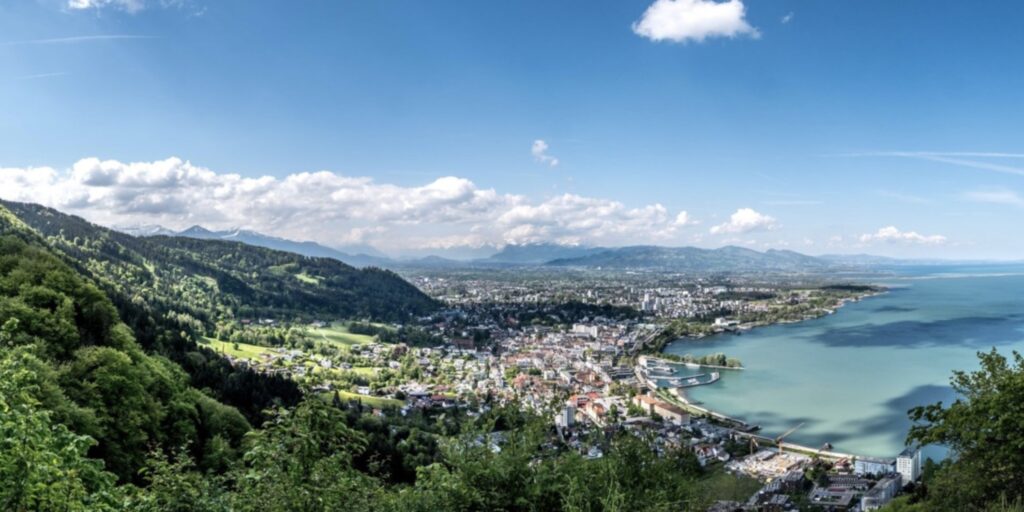
The Bregenz Festival (Bregenzer Festspiele) is one of Austria’s most renowned cultural events, celebrated for its unique performances on a floating stage on Lake Constance. Its origin and development reflect both the cultural aspirations of the region and the festival’s evolution into a world-class event.
Origin
The Bregenz Festival was founded in 1946, just after World War II, during a time when much of Europe was rebuilding and rediscovering its cultural identity. The festival was established with the goal of bringing high-quality opera and musical performances to the people of Bregenz and the surrounding region. The founders of the festival were inspired by the town’s scenic beauty and its potential to host open-air performances.
The first festival was a modest affair, featuring two orchestral concerts performed on two barges tied together on Lake Constance. Despite its humble beginnings, the festival was well-received, and the idea of staging performances on the lake quickly captured the public’s imagination.
2000s-Present: Modern Era and Innovations
In the 21st century, the Bregenz Festival has continued to innovate, with increasingly elaborate and technically sophisticated productions on the floating stage. The stage designs have become famous for their creativity and scale, often featuring large, moving sets and striking visual effects. These productions are not only artistic achievements but also technical marvels, requiring complex engineering and design.
Cultural Impact and Legacy
Today, the Bregenz Festival is a key cultural event in Austria and a symbol of the town of Bregenz itself. It attracts tens of thousands of visitors each year, contributing significantly to the local economy and enhancing the region’s cultural prestige. The festival’s blend of traditional and contemporary art, combined with its unique setting, has made it a must-visit destination for opera lovers and tourists alike.
The Bregenz Festival’s commitment to innovation, quality, and accessibility has ensured its continued success and relevance in the global cultural landscape. It stands as a testament to the power of art to inspire and bring people together, even in challenging times.
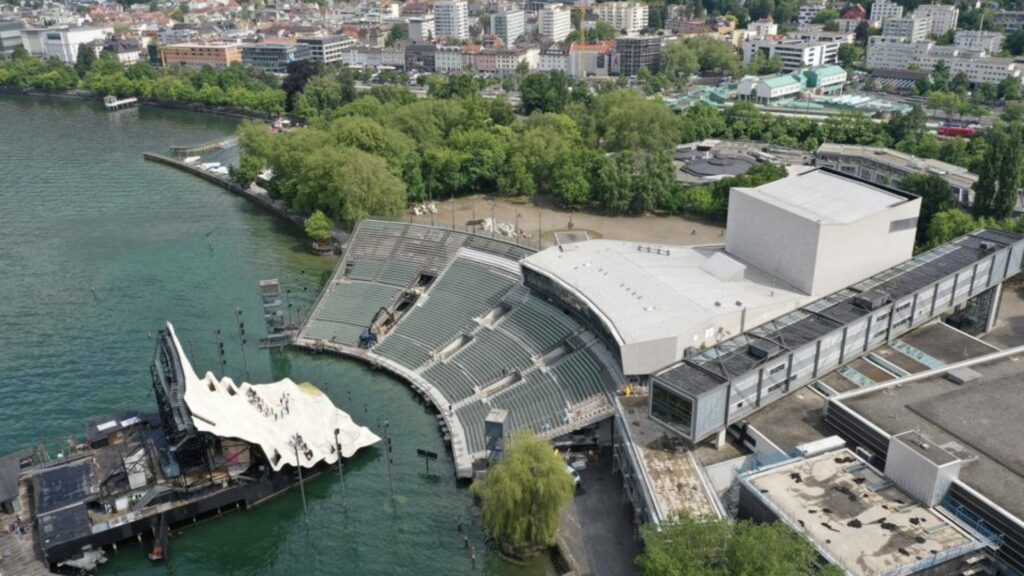
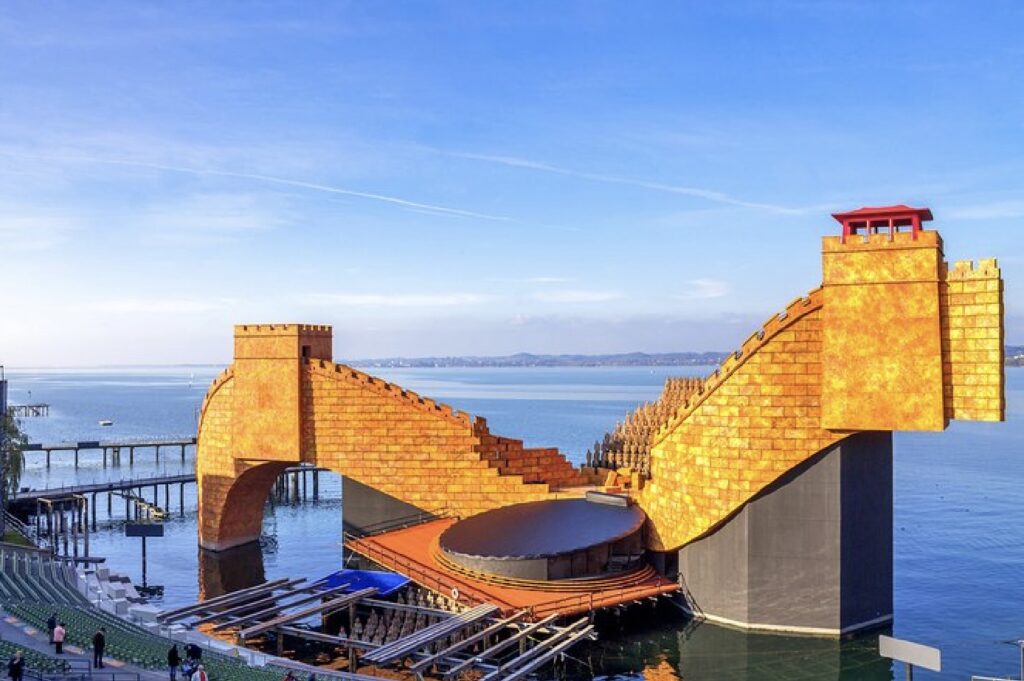
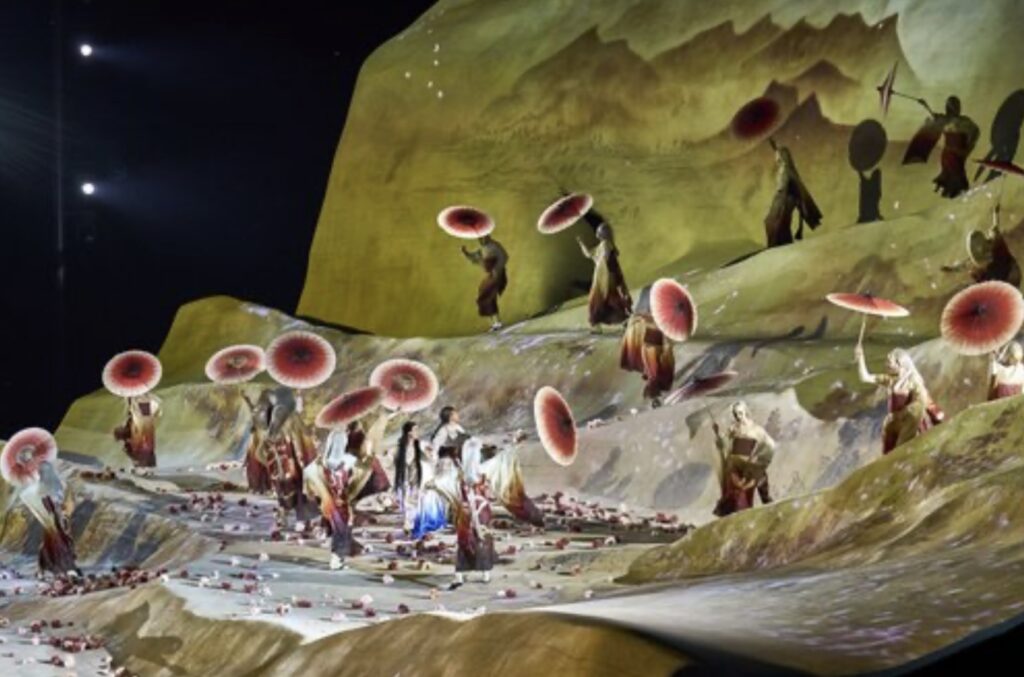
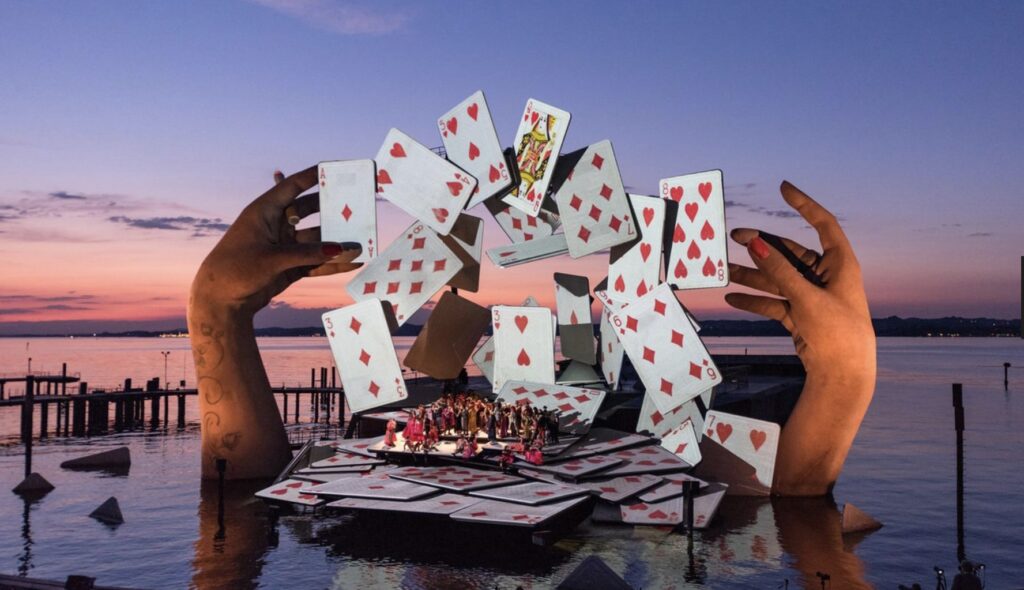
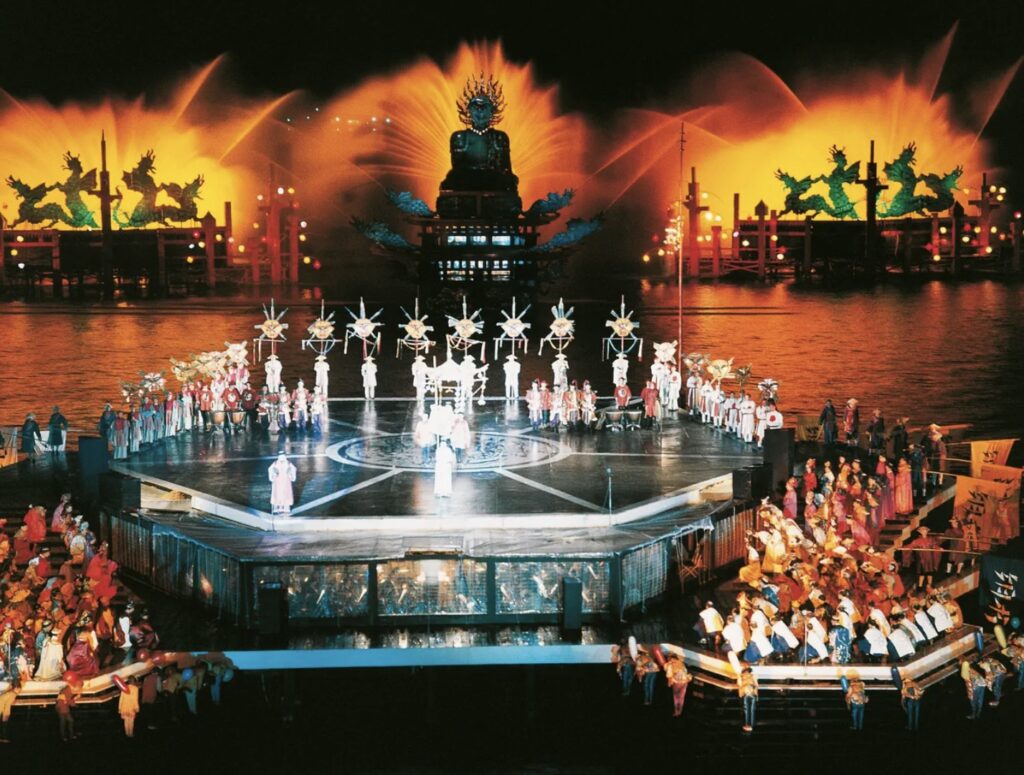
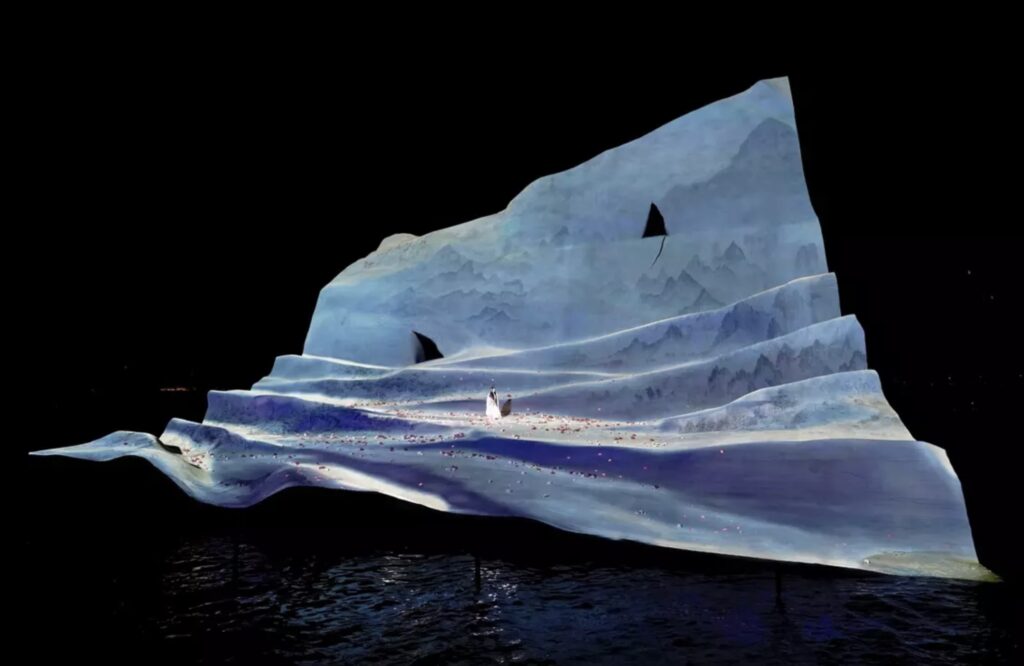
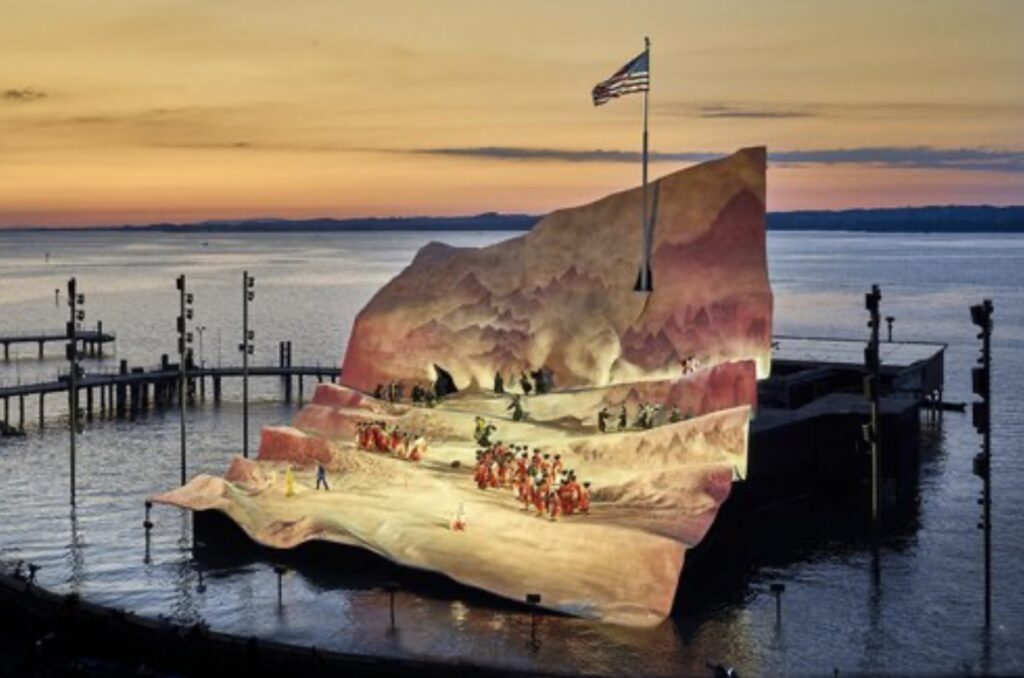
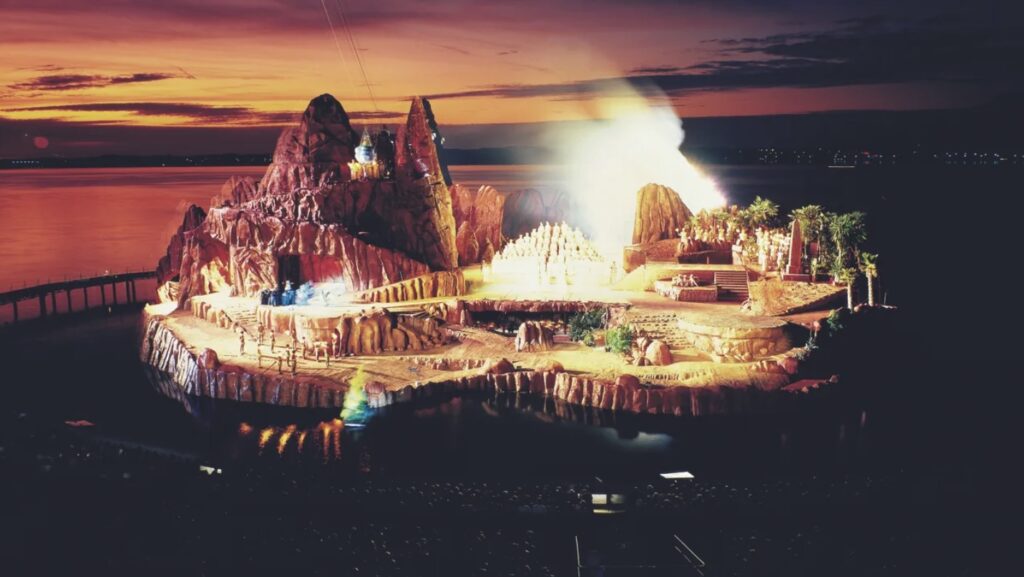
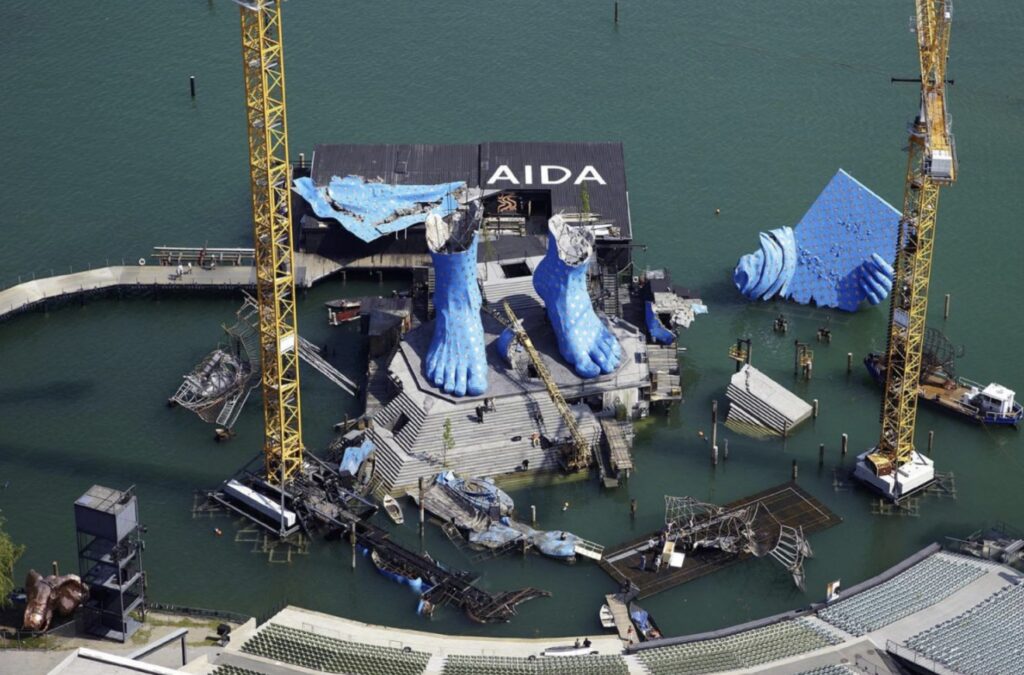
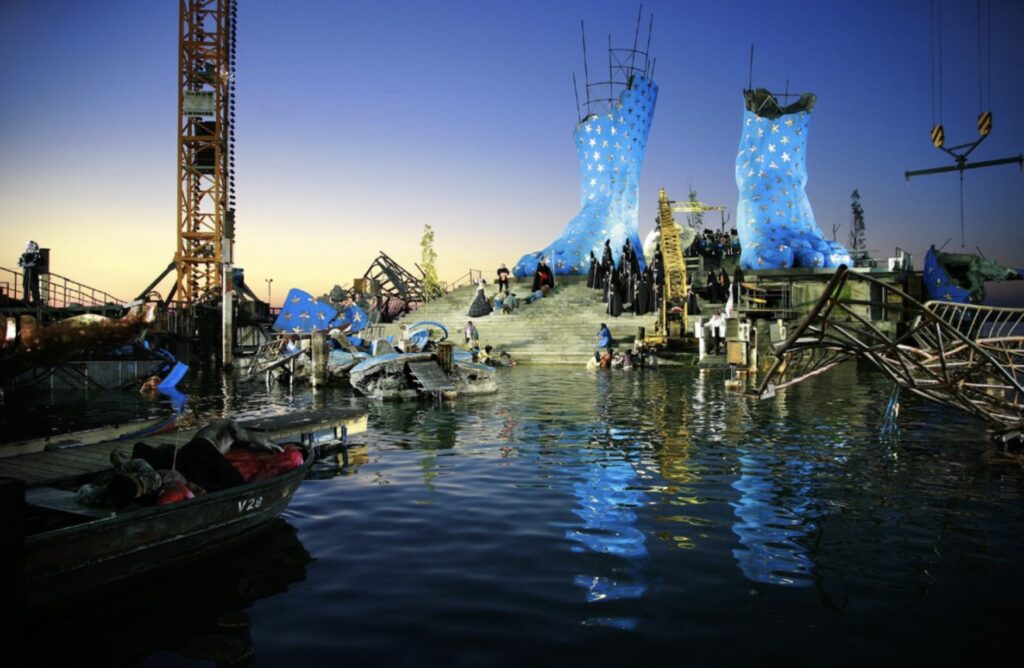
Historical Monuments
Bregenz is home to a variety of historical monuments and tourist attractions that highlight its rich cultural heritage and stunning natural beauty. Here are some of the key sites:
- Martinsturm (St. Martin’s Tower):
- Built in the early 17th century, this Baroque tower is one of Bregenz’s most iconic landmarks. It features a distinctive onion dome and offers panoramic views of the town and Lake Constance. The tower was originally part of the medieval town fortifications and now houses a military history museum.
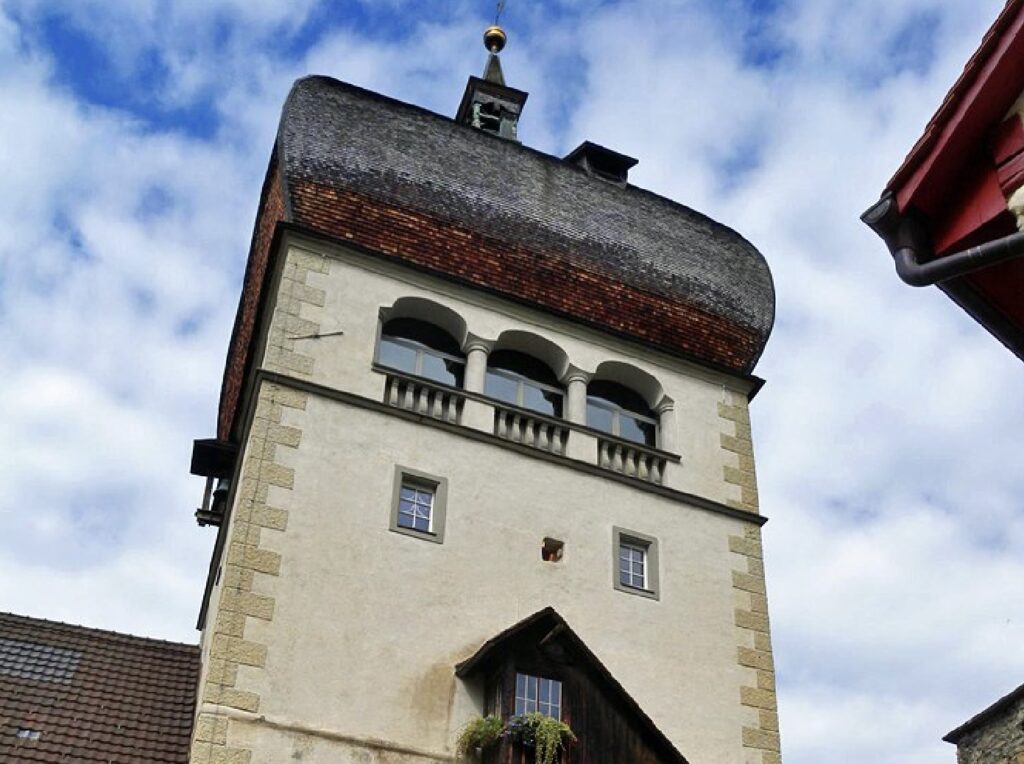
- Bregenz Upper Town (Oberstadt):
- The oldest part of Bregenz, the Oberstadt is a well-preserved medieval area with narrow cobblestone streets, historic buildings, and charming squares. Key attractions include the old town gate (Römerstraße) and the Gothic-style St. Gallus Church, dating back to the 14th century.
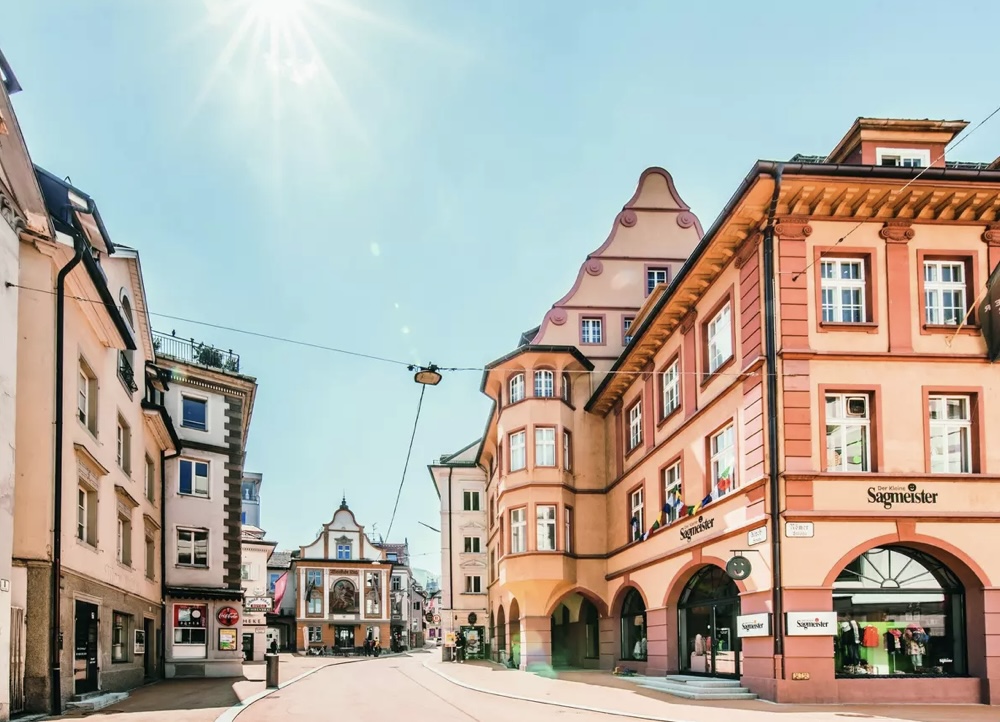
- Herz-Jesu-Kirche (Heart of Jesus Church):
- A beautiful Neo-Gothic church completed in 1908, Herz-Jesu-Kirche is known for its impressive twin towers and richly decorated interior. It is one of the most prominent churches in Bregenz.
- Kunsthaus Bregenz (KUB):
- Although a modern structure, the Kunsthaus Bregenz is a significant cultural landmark. Designed by Swiss architect Peter Zumthor, it is a striking example of contemporary architecture and is home to rotating exhibitions of international contemporary art.
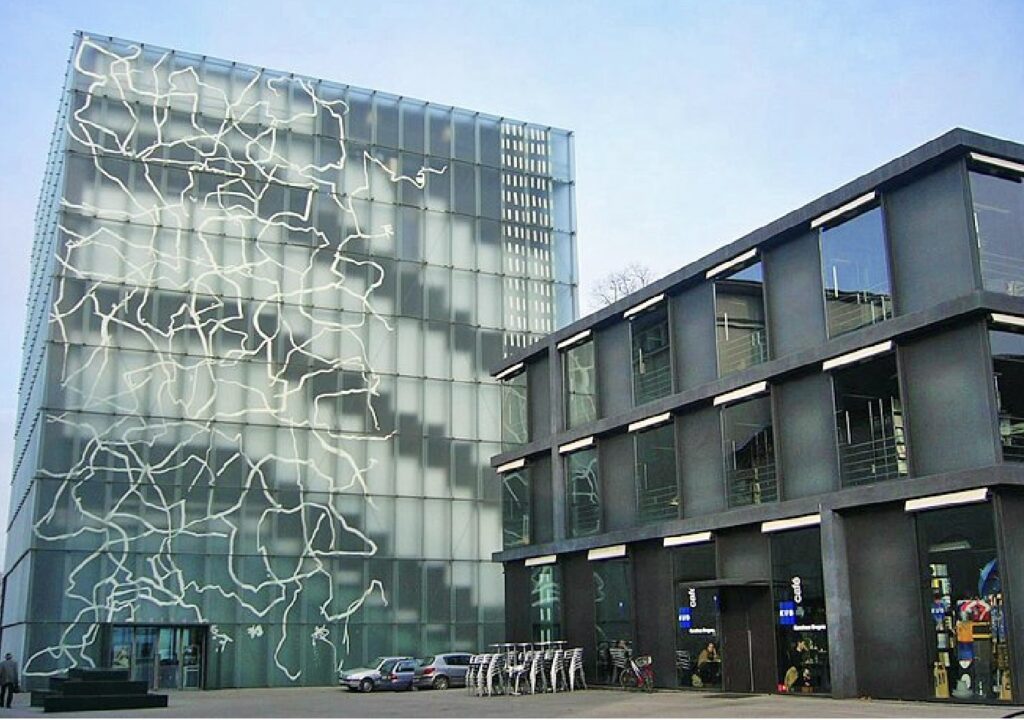
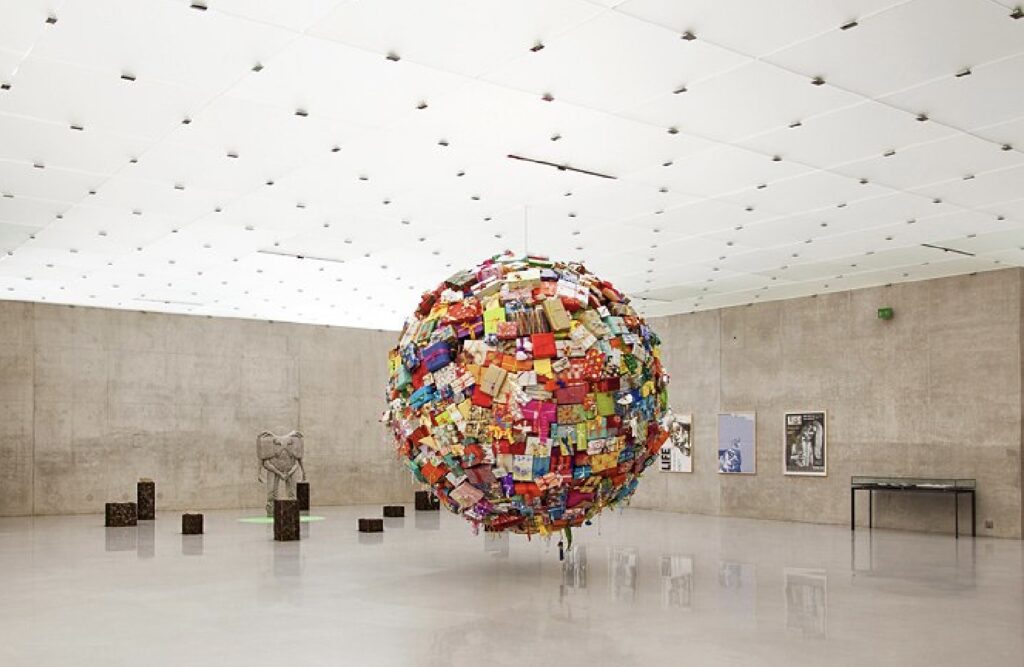
- Old Town Hall (Altes Rathaus):
- Located in the Oberstadt, the Old Town Hall is a Renaissance building with a beautifully decorated façade. It was built in the early 17th century and is now used for municipal functions and exhibitions.
Tourist Attractions
- Bregenz Festival (Bregenzer Festspiele):
- Held annually in July and August, the Bregenz Festival is famous for its opera performances on a floating stage on Lake Constance. The festival is a major cultural event, drawing visitors from around the world.
- Pfänder Mountain:
- Pfänder is the local mountain of Bregenz, rising to 1,064 meters above sea level. Visitors can take a cable car to the summit, where they are rewarded with stunning panoramic views of Lake Constance, the Alps, and the surrounding region. The area offers hiking trails, a wildlife park, and a restaurant.
- Lake Constance (Bodensee):
- Lake Constance is one of the largest lakes in Europe, and Bregenz is located on its eastern shore. The lake is a major attraction for boating, swimming, and other water activities. The promenade along the lake is perfect for leisurely walks, and there are numerous cafés and restaurants with lakeside views.
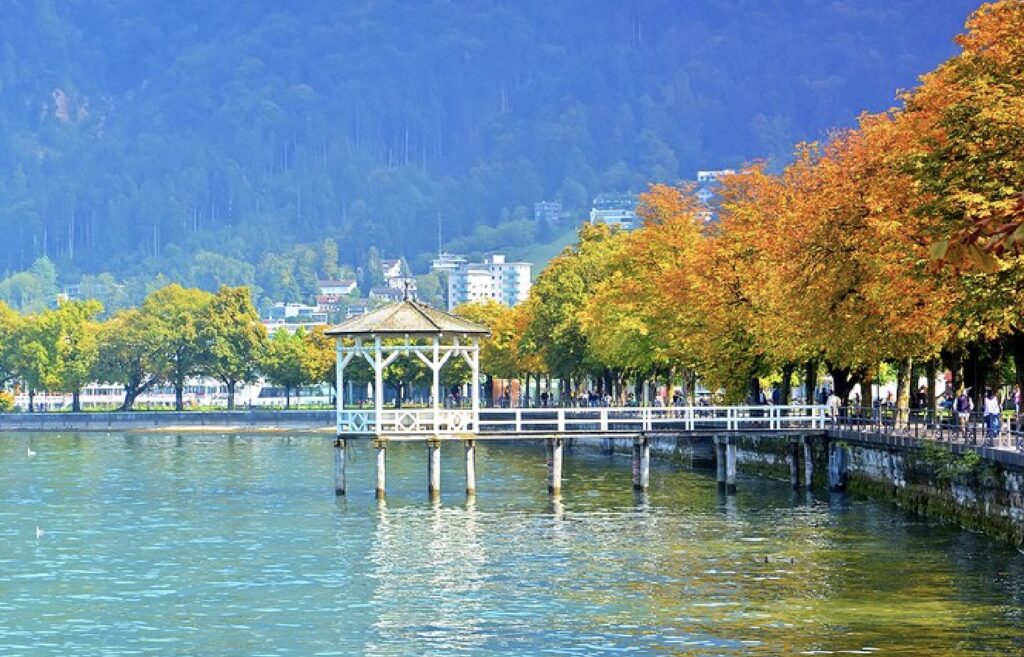
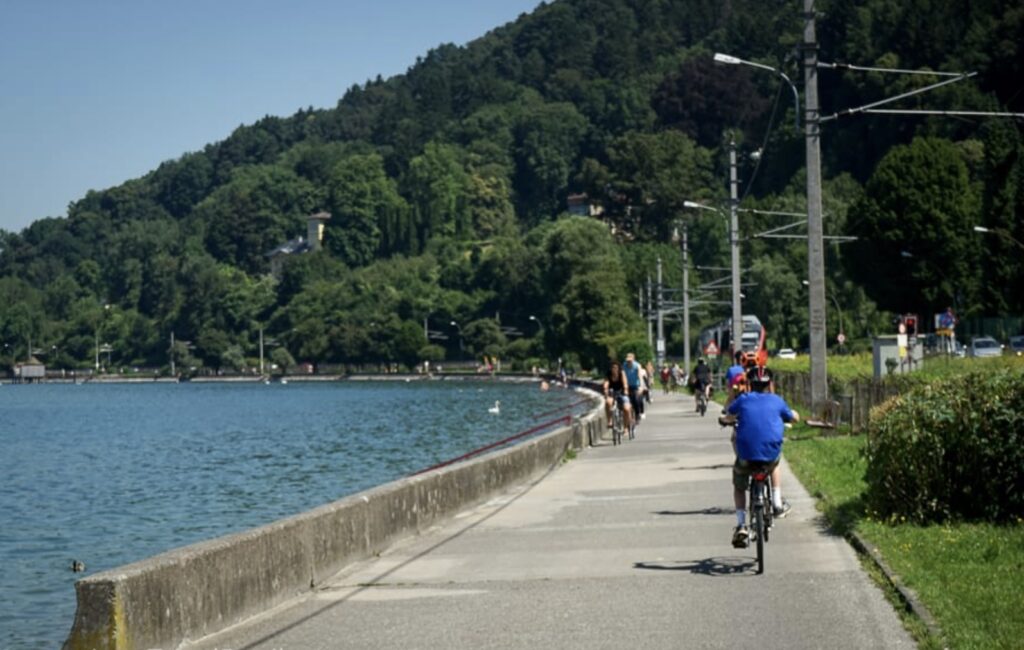

- Seebühne (Lake Stage):
- Part of the Bregenz Festival, the Seebühne is the world’s largest floating stage. Even outside of festival season, it is a fascinating sight to see, with its often elaborate set designs visible from the shore.
- Vorarlberg Museum:
- This museum offers insights into the history, culture, and art of the Vorarlberg region. It features a diverse collection ranging from archaeological finds to contemporary art. The museum building itself is a modern architectural work of art.
- Kaiserstrand Bathhouse:
- Located near Lochau, just outside Bregenz, this historic bathhouse offers a unique place to relax by the lake. Visitors can enjoy sunbathing, swimming, and views of the lake from this beautifully restored structure.
- Mili, the Historic Military Bathhouse:
- This wooden structure was built in 1825 as a military bathhouse. It is one of the oldest bathhouses on Lake Constance and is still used as a public swimming area during the summer months.
- Gebhardsberg:
- Overlooking Bregenz, Gebhardsberg is a hill with the ruins of a medieval castle. The site offers a great viewpoint over the city and lake, and it is a popular spot for hiking and picnics.
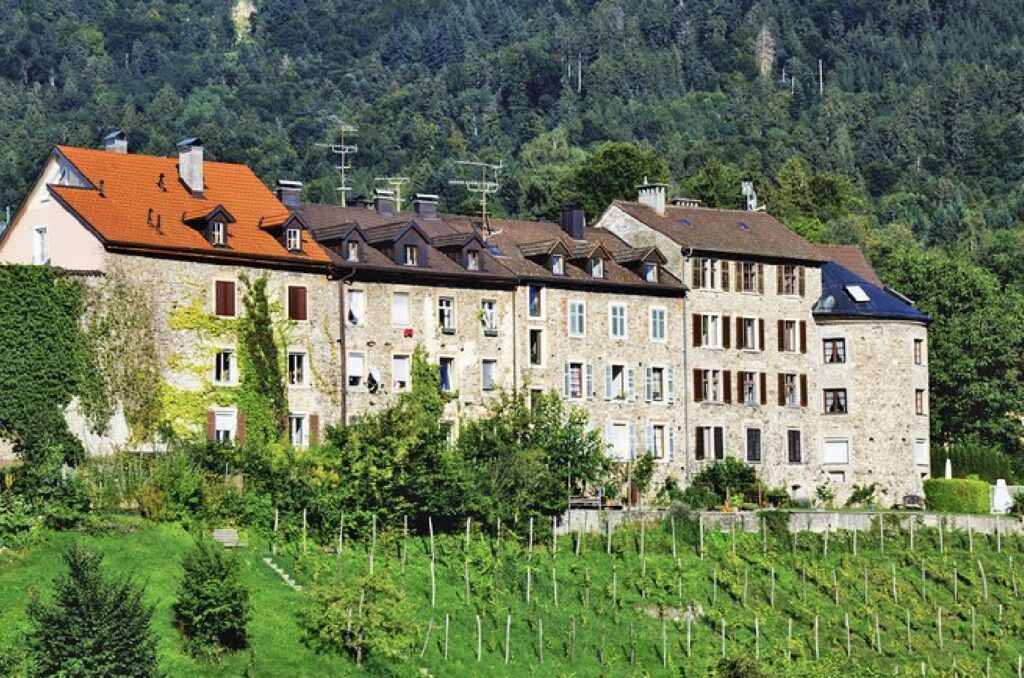
These attractions make Bregenz a destination rich in history, culture, and natural beauty, offering something for every type of traveler.
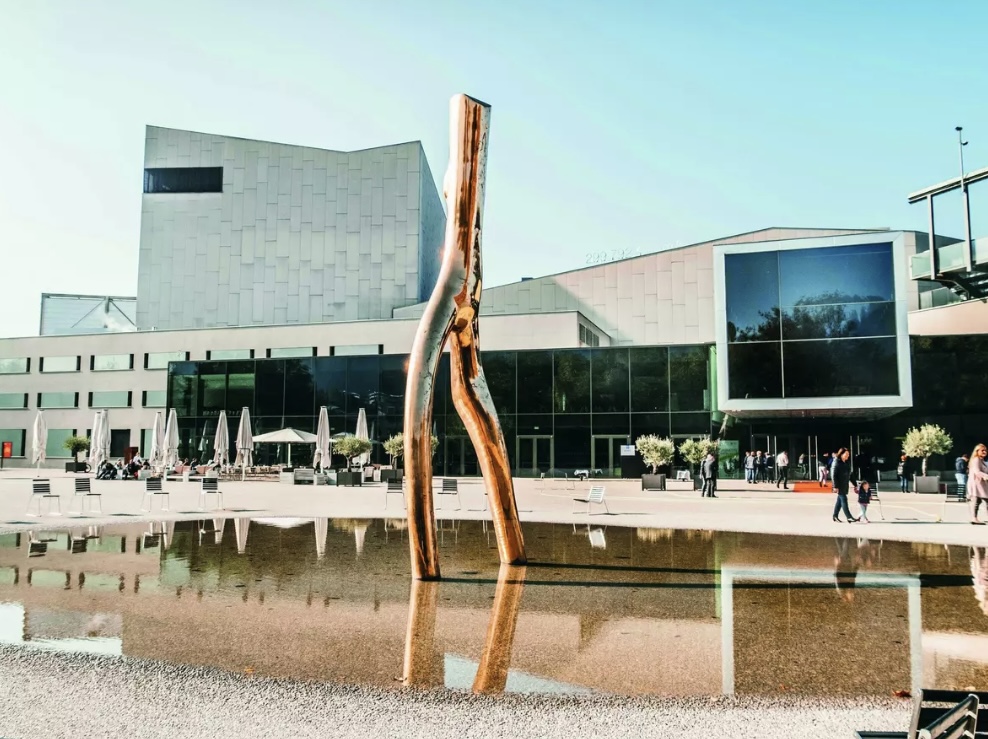
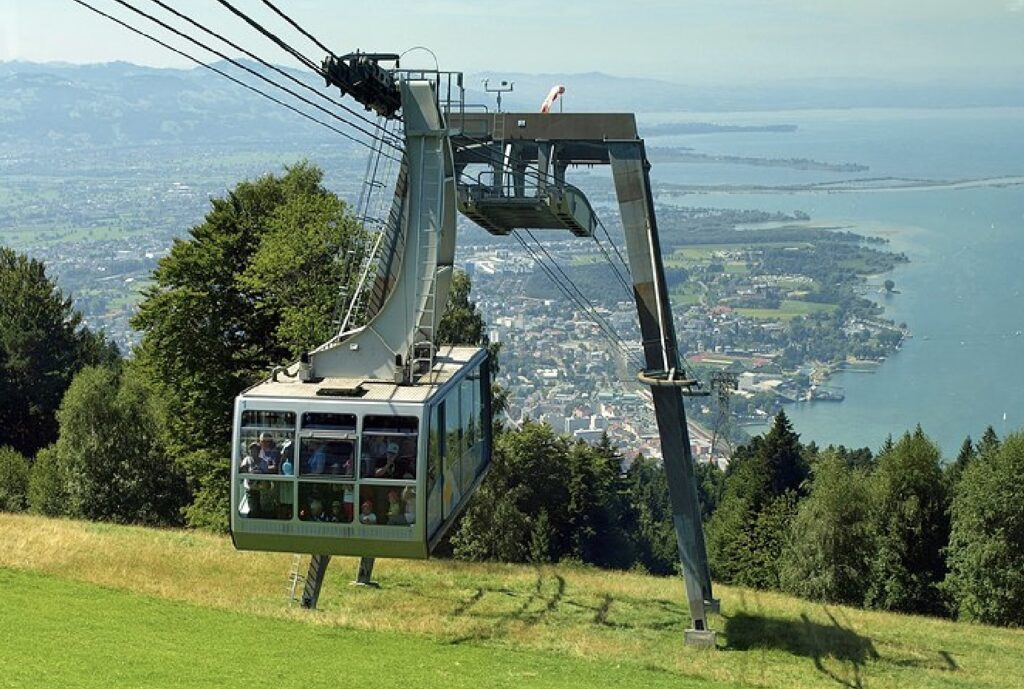
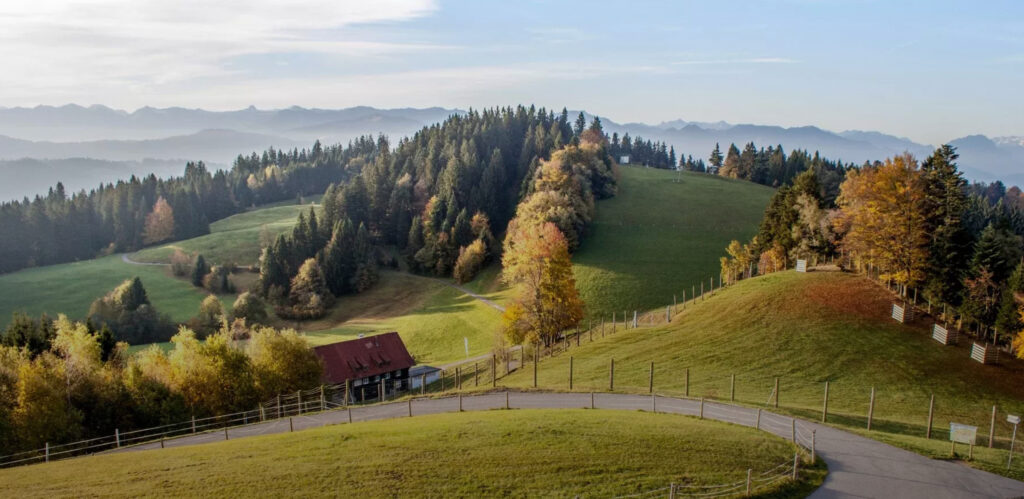
Bregenz and the surrounding region offer a variety of hiking trails that cater to different skill levels, from easy walks to more challenging hikes. Here’s a selection categorized by difficulty:
Easy Trails
- Pfänder Panoramaweg:
- Distance: 5 km (3.1 miles)
- Elevation Gain: Minimal
- Description: This is a leisurely trail that circles around the Pfänder mountain’s summit. It offers stunning panoramic views of Lake Constance, the Swiss Alps, and the surrounding region. The trail is well-maintained and accessible, making it ideal for families and casual walkers. You can reach the starting point via the Pfänderbahn cable car.
- Lake Constance Promenade:
- Distance: Varies (can be as long or short as you like)
- Elevation Gain: None
- Description: A gentle, flat walk along the shores of Lake Constance, this trail is perfect for a relaxing stroll. The promenade offers beautiful views of the lake and passes through Bregenz, providing plenty of opportunities to stop at cafés and restaurants.
- Riedhütte Trail:
- Distance: 4 km (2.5 miles)
- Elevation Gain: Minimal
- Description: This easy trail through the Ried wetlands near Bregenz is perfect for nature lovers. It’s a flat and straightforward walk, offering opportunities to observe local wildlife and enjoy the tranquility of the marshes.
Moderate Trails
- Pfänder to Möggers:
- Distance: 12 km (7.5 miles)
- Elevation Gain: ~300 meters (984 feet)
- Description: Starting from the top of the Pfänder mountain, this moderately challenging trail takes you through forests and meadows to the village of Möggers. Along the way, you’ll be treated to views of the Alps and Lake Constance. The trail is well-marked and offers a pleasant mix of ascents and descents.
- Karren to Staufensee Loop:
- Distance: 10 km (6.2 miles)
- Elevation Gain: ~400 meters (1,312 feet)
- Description: Located near Dornbirn, just a short drive from Bregenz, this loop trail begins at the Karren cable car station and leads to the Staufensee reservoir. The trail is moderately challenging with some steeper sections, but it rewards hikers with beautiful views of the surrounding mountains and a peaceful forest setting.
- Eichenberg Loop:
- Distance: 8 km (5 miles)
- Elevation Gain: ~350 meters (1,148 feet)
- Description: This trail starts in the village of Eichenberg and offers a loop through picturesque landscapes, including forests and open fields with views of Lake Constance. The hike is moderately challenging due to some uphill sections, but it’s well-suited for those with a moderate level of fitness.
Challenging Trails
- Pfänder Ridge Hike to Scheidegg:
- Distance: 20 km (12.4 miles)
- Elevation Gain: ~600 meters (1,969 feet)
- Description: This challenging trail follows the ridge of the Pfänder mountain to the German town of Scheidegg. The hike involves significant elevation changes and requires good fitness, but the views along the way are spectacular. The trail passes through a variety of landscapes, including dense forests, alpine meadows, and rocky outcrops.
- Hoher Freschen:
- Distance: 15 km (9.3 miles)
- Elevation Gain: ~1,100 meters (3,609 feet)
- Description: The hike to the summit of Hoher Freschen is one of the more challenging routes near Bregenz. The trail starts from the Alpe Gulmalpe and involves a steep ascent to the peak, where hikers are rewarded with panoramic views of the Bregenzerwald and the Rhine Valley. This hike is suitable for experienced hikers due to its length and elevation gain.
- Geißkopf and Hochberg Loop:
- Distance: 18 km (11.2 miles)
- Elevation Gain: ~900 meters (2,953 feet)
- Description: This challenging loop trail takes you over the peaks of Geißkopf and Hochberg, offering rugged terrain and impressive vistas. The trail requires a good level of fitness and is recommended for experienced hikers. The route is less crowded, providing a more solitary experience with nature.
These trails offer a variety of experiences, from easy strolls with scenic views to challenging hikes that test endurance and reward with breathtaking vistas.
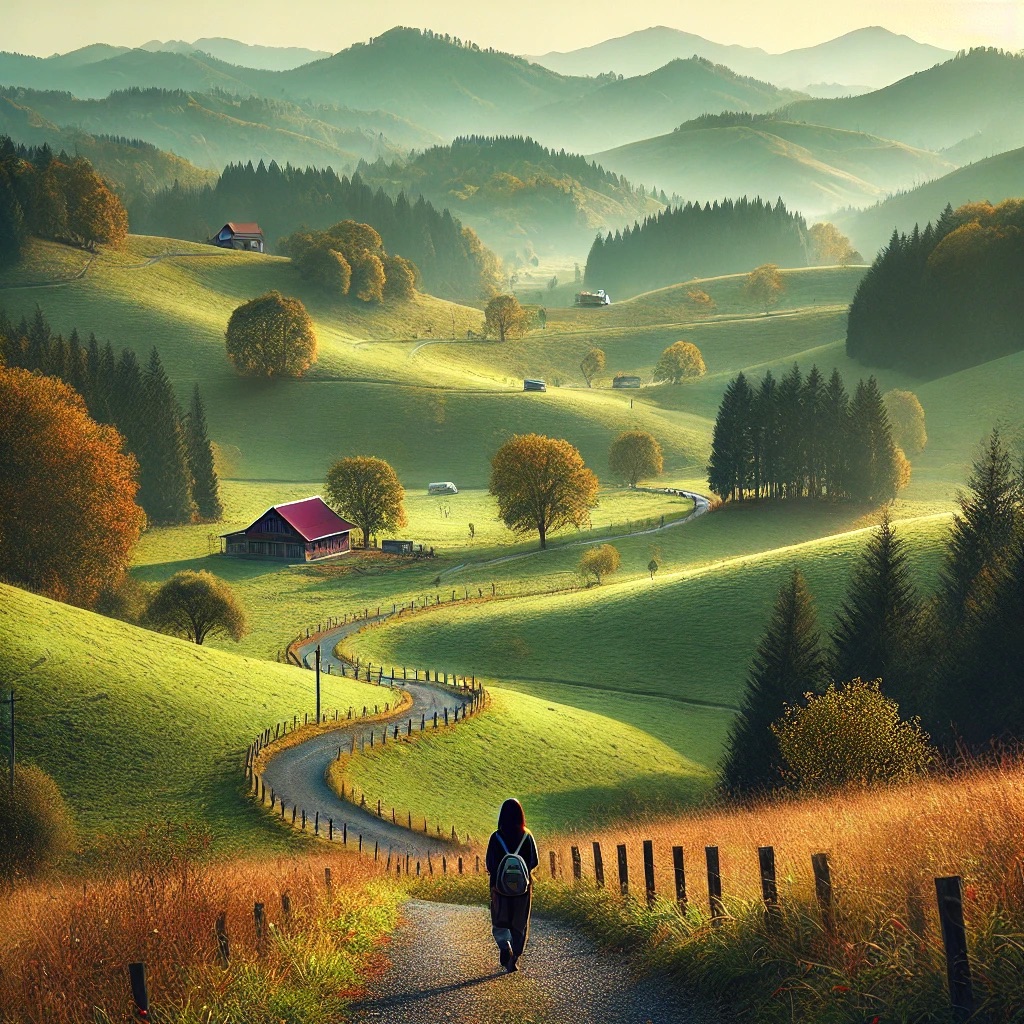
For a luxurious stay in Bregenz with unique features, I recommend incorporating Hotel Schwärzler into your itinerary. This upscale hotel offers a blend of modern luxury and traditional Austrian hospitality, set in a tranquil location near the city center and close to nature.
Day 1: Exploring Bregenz and Easy Hiking
Morning:
- Arrival and Check-in at Hotel Schwärzler:
- Upon arriving in Bregenz, check in to Hotel Schwärzler. This boutique hotel offers elegant rooms with stylish design, and some rooms feature balconies with views of the surrounding landscape. The hotel is known for its serene atmosphere, making it a perfect base for your stay.
Breakfast and Explore Bregenz Old Town:
- After settling in, head to the hotel’s Schwärzler Lounge for a gourmet breakfast featuring organic and locally sourced ingredients. Enjoy fresh bread, pastries, cheeses, and other specialties.
Late Morning:
- Lake Constance Promenade and Lunch:
- After your morning exploration of the Oberstadt, walk along the Lake Constance Promenade and have lunch at Wirtshaus am See.
Afternoon:
- Easy Hike: Pfänder Panoramaweg:
- Take the Pfänderbahn cable car to the summit and enjoy the Pfänder Panoramaweg. Visit the Wildlife Park along the way.
Evening:
- Return to Hotel Schwärzler:
- After your hike, return to Hotel Schwärzler for some relaxation. Take advantage of the hotel’s spa and wellness area, which includes a sauna, steam bath, and relaxation lounge. You might also enjoy a massage or other wellness treatments offered at the hotel.
Dinner and Bregenz Festival:
- Dine at the Schwärzler Restaurant, where you can indulge in a refined menu that highlights regional cuisine with a modern twist. The restaurant is known for its use of fresh, seasonal ingredients and offers a carefully curated wine list featuring Austrian wines.
- Head to the Bregenz Festival for an unforgettable evening of opera on the floating stage.
Day 2: More Bregenz and Nature
Morning:
- Breakfast and Leisure:
- Enjoy a leisurely breakfast at the hotel, with options like freshly prepared egg dishes, local cheeses, and organic juices. Spend some time relaxing in the hotel’s gardens or by the indoor pool before heading out for the day.
Hike the Eichenberg Loop:
- Drive to Eichenberg for your morning hike. Enjoy the scenic and moderately challenging Eichenberg Loop.
Lunch:
- Lunch with a View:
- Have lunch at Gasthof Paradies, as previously mentioned.
Afternoon:
- Visit Vorarlberg Museum and Relax by the Lake:
- Return to Bregenz for a cultural visit to the Vorarlberg Museum, followed by relaxation by Lake Constance.
Evening:
- Return to Hotel Schwärzler:
- Conclude your day with a final dinner at Wirtshaus zum Kornmesser, or opt for another delightful meal at the Schwärzler Restaurant if you prefer to stay in. End your night with a drink at the hotel’s cozy bar or unwind in the garden terrace.
Departure:
- If you’re leaving the next morning, you can request a late check-out to enjoy a relaxed departure.
Hotel Schwärzler adds a touch of luxury and tranquility to your stay, making your visit to Bregenz both comfortable and memorable.
